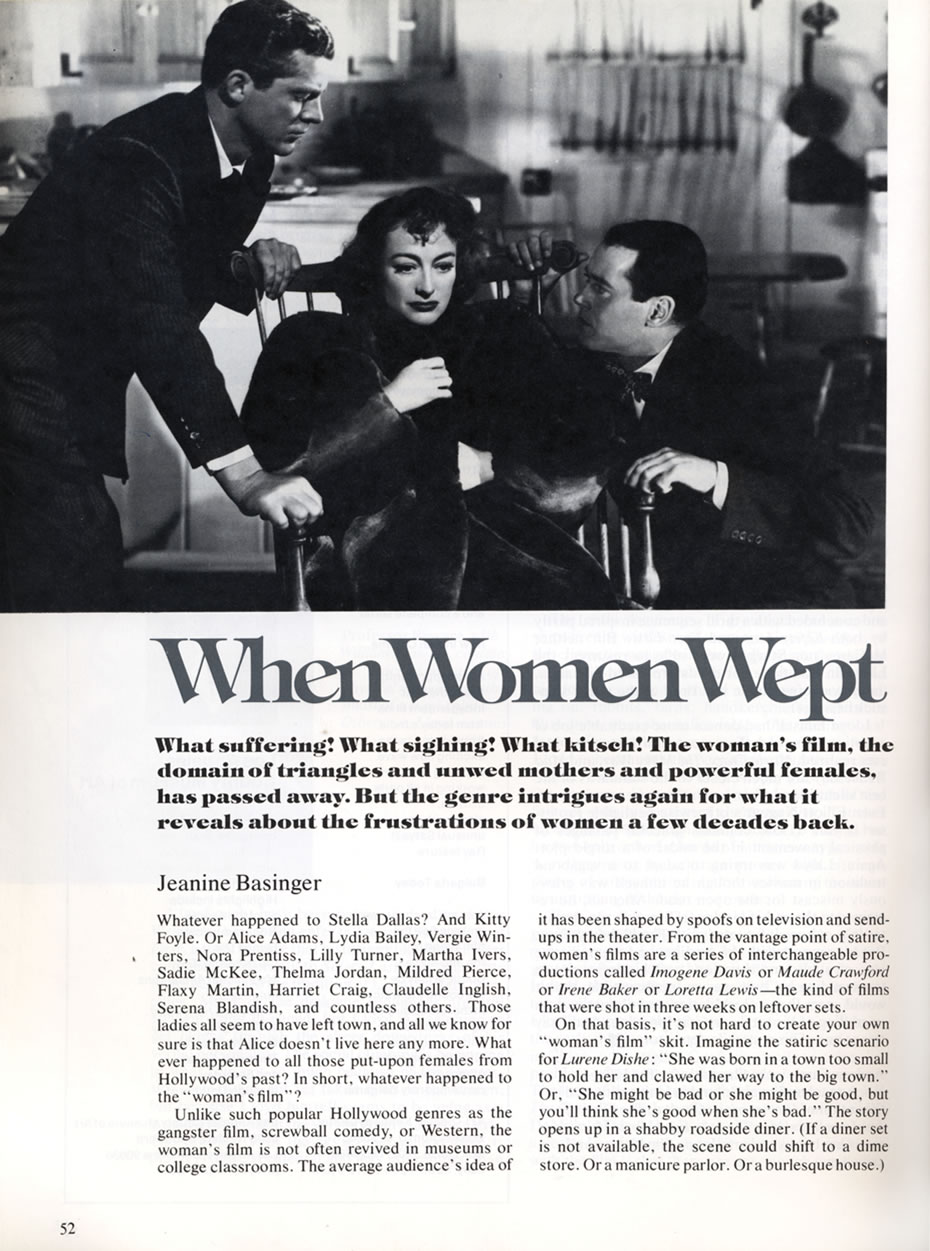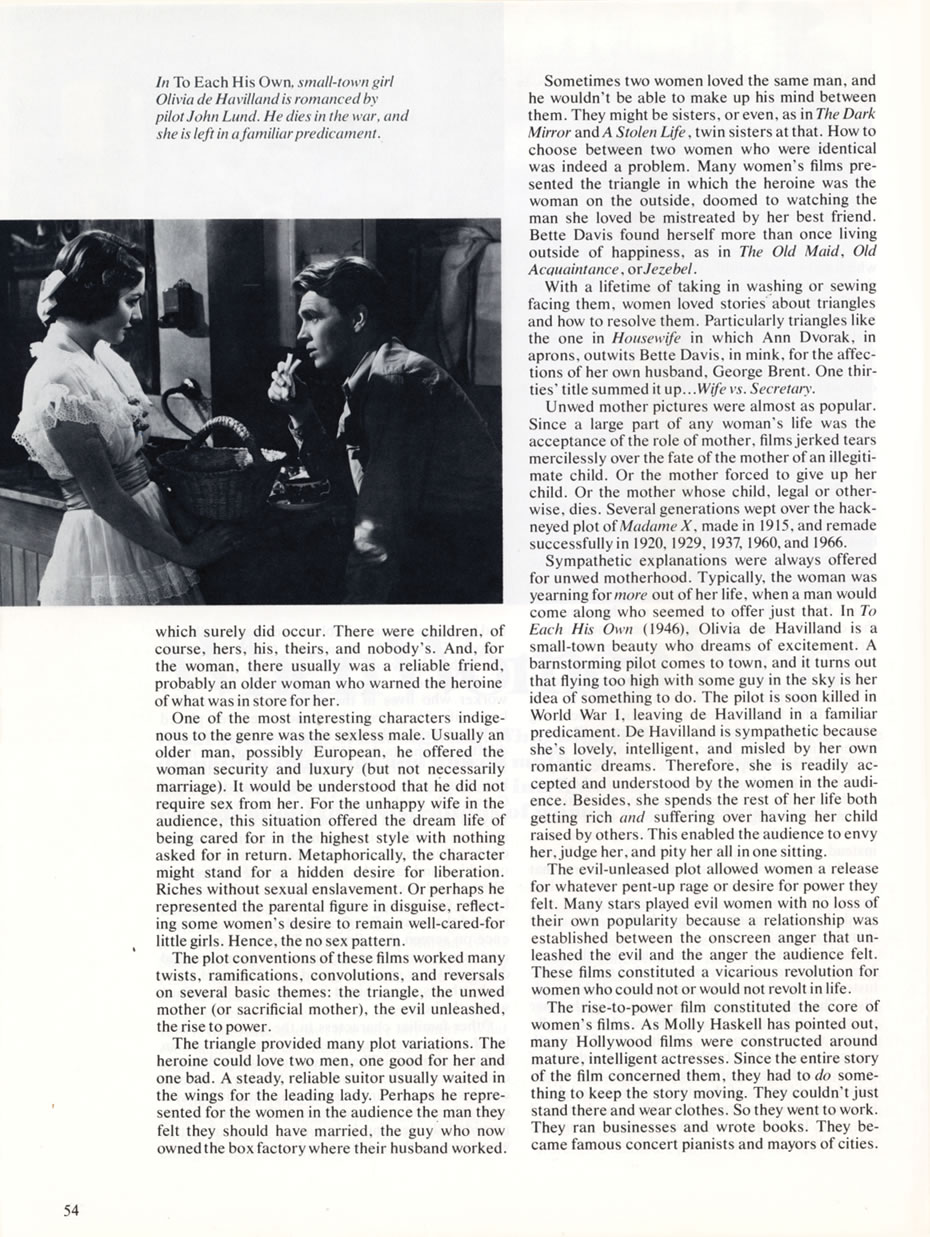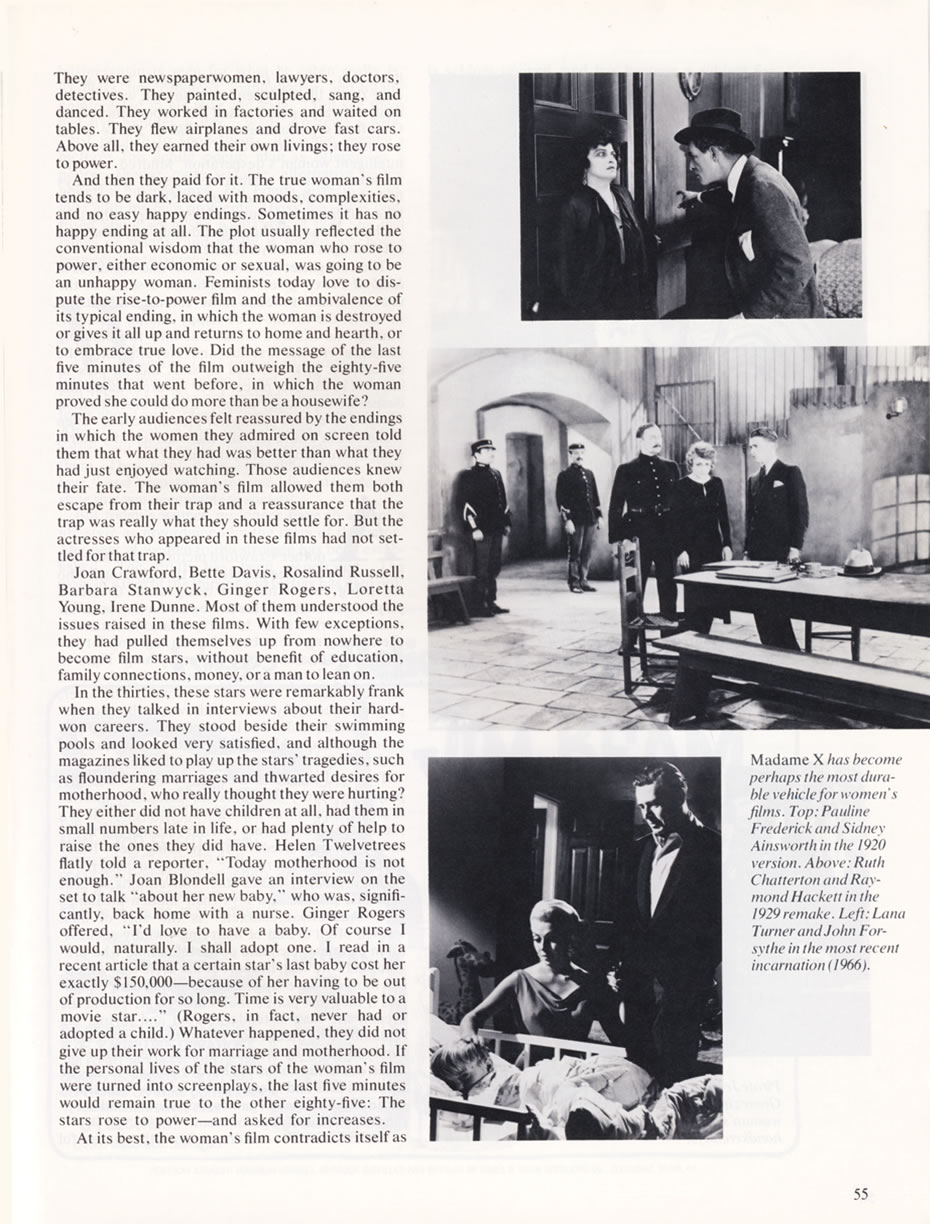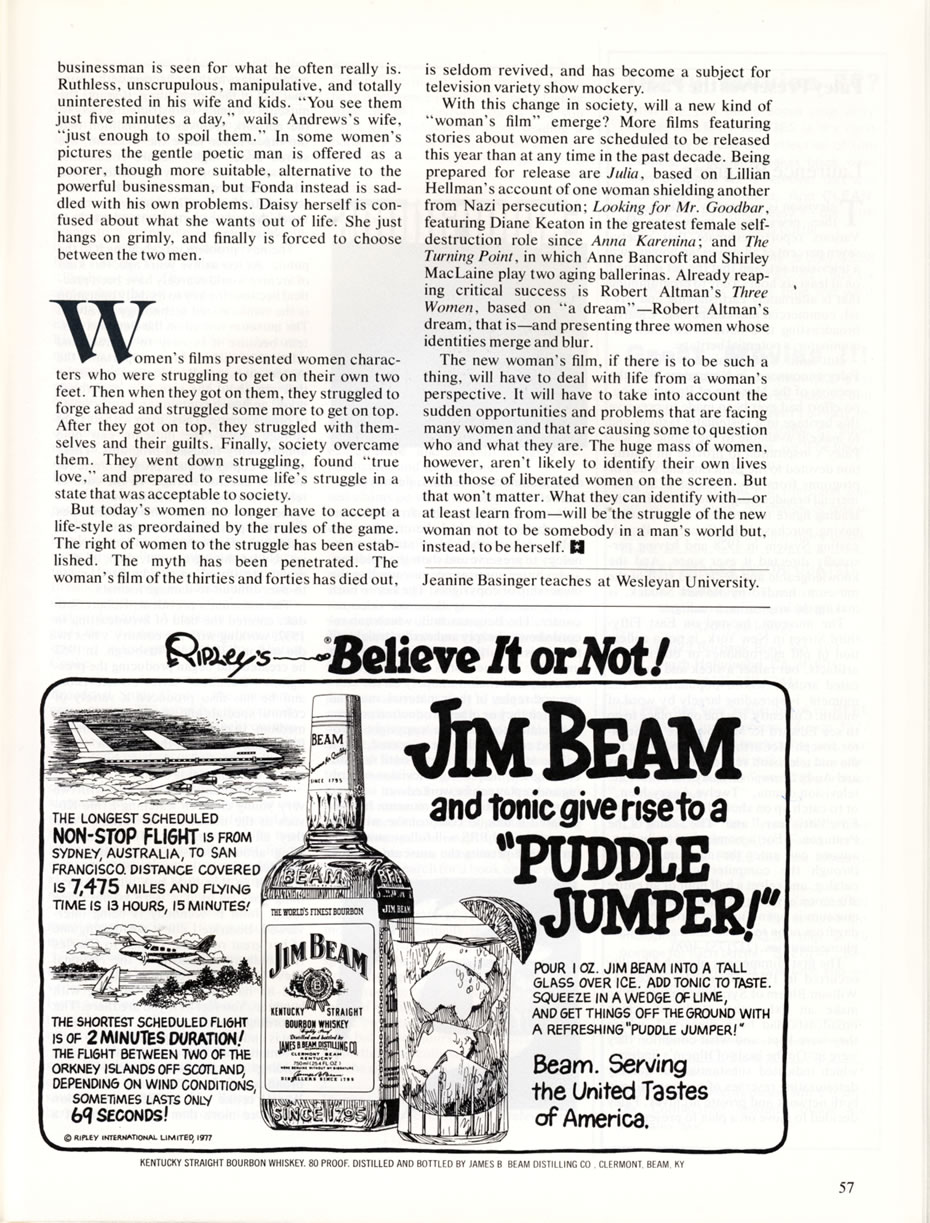
REMEMBERING LORETTA YOUNG
In the 1930s and ‘40s she graced the big screen as a luminous model of femininity in films like THE FARMER’S DAUGHTER and THE BISHOP’S WIFE, where her roles, like those of most women at the time, were defined by the men in her life. From 1953-61, she twirled into American homes as the smiling, perfectly dressed hostess of THE LORETTA YOUNG SHOW, a weekly dramatic anthology series on NBC. Now, to mark the centenary of Loretta Young’s birth (as Gretchen Michaela Young) on January 6, we recall – and reprint – “When Women Wept” by Jeanine Basinger, which appeared in the September 1977 issue of American Film™.
The phenomenon of the “woman’s film” owes just as much to Joan Crawford, Bette Davis, Olivia de Havilland, Ginger Rogers, Rosalind Russell and Barbara Stanwyck – and all receive their due in Basinger’s article – but the Wesleyan film studies professor and AFI Trustee, who describes Young as “overlooked,” devotes an entire chapter of her 2007 book, “The Star Machine,” to the slender brunette from Salt Lake City, whose film roles and television series defined what it meant to be a daughter, wife or mother through much of the 20th century.
“It was tough for a woman to last,” Basinger wrote. “Those who ran the studios and operated the star machine knew only too well that the beautiful females stars they were manufacturing were going to lose popularity sooner than the males. Glamorous women were a fragile product…the camera was a cruel observer, and it saw age: wrinkles, thickness, the loss of that glistening shine of the first blush of ripe sexuality…If a female star could last for a decade, she really paid off. If she could last for two decades, she was a phenomenal success. If she lasted longer than that, she was a miracle, and today we can call her a legend.”
The film community is celebrating the centenary of Young’s birth in a variety of ways. The Hollywood Museum premieres “Loretta Young: Hollywood Legend,” the most comprehensive collection of authentic Hollywood memorabilia on Young ever assembled, beginning January 8, 2013. The exhibition offers a vibrant celebration of the movie star and fashion icon of the 20th Century, offering an intimate look at this remarkable woman, her career and her intriguing personal life.
The Hollywood Museum, the official museum of Hollywood, is in the Historic Max Factor Building located at 1660 North Highland Avenue at Hollywood Boulevard. The exhibition will trace the remarkable 77-year career of Loretta Young as she became one of the most popular motion picture and television stars in Hollywood history, garnering numerous awards. The comprehensive collection includes never before displayed items, costumes, artifacts and memorabilia gathered from family and private collectors. Young’s clothing and accessories from her personal wardrobe, costumes, photographs, contracts, documents and private papers, including her handwritten correspondence, home movies and awards, will be on display.
“We are delighted to spotlight one of the greatest Hollywood legends, Loretta Young,” said Donelle Dadigan, Founder and President of The Hollywood Museum, “whose star talents transcended motion pictures and television. It is especially poignant to showcase the collection at The Hollywood Museum in the historic Max Factor Building as Loretta Young was the first Max Factor model.
The AFI Silver Theatre and Cultural Center in Silver Spring, Maryland will commemorate the Loretta Young Centennial with a series of screenings between March 8 and April 18, beginning with THE FARMER’S DAUGHTER.






 |
Producer Samuel Goldwyn borrowed Loretta Young from RKO to replace Teresa Wright, who was originally cast as “Julia Brougham” in THE BISHOP’S WIFE, but was forced to withdraw because of pregnancy just before filming began. In 1996, THE BISHOP’S WIFE was remade as THE PREACHER’S WIFE, directed by Penny Marshall and starring Whitney Houston in the title role. For more on THE BISHOP'S WIFE, visit the AFI Catalog of Feature Films |

